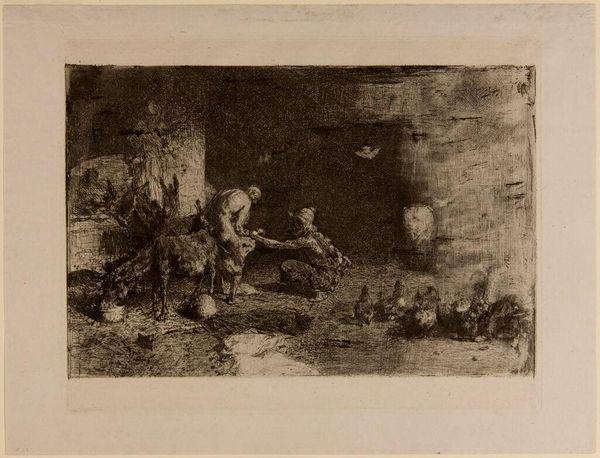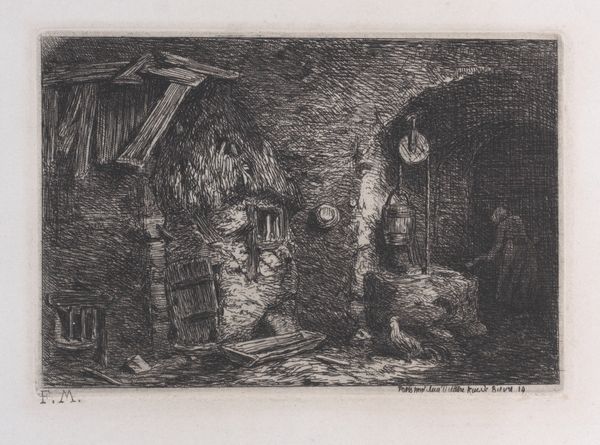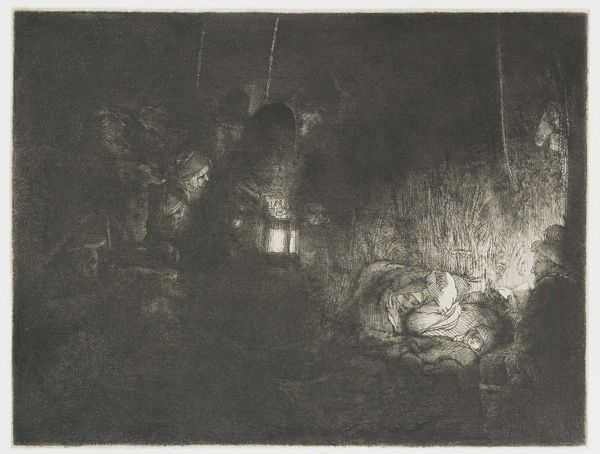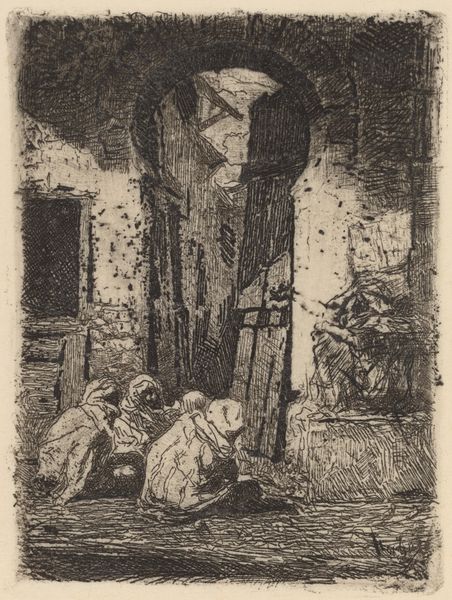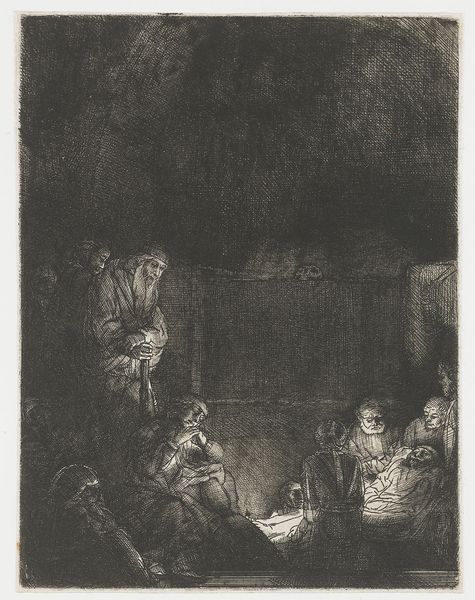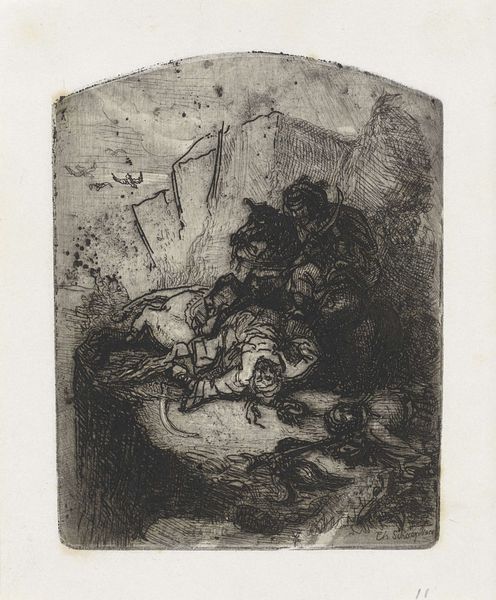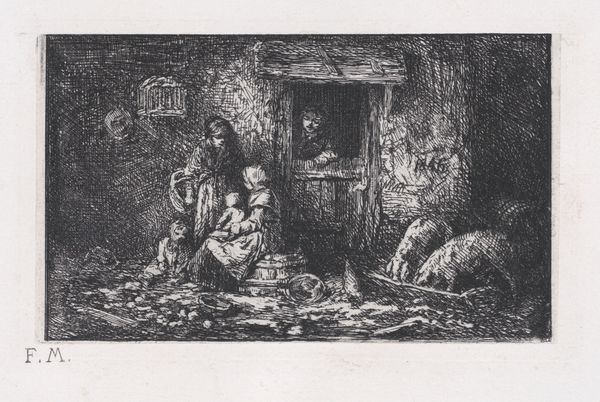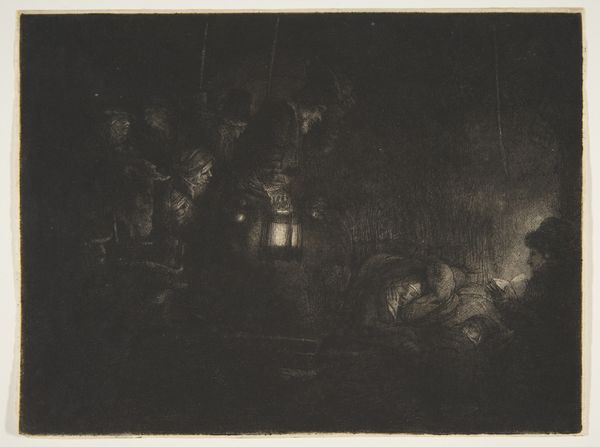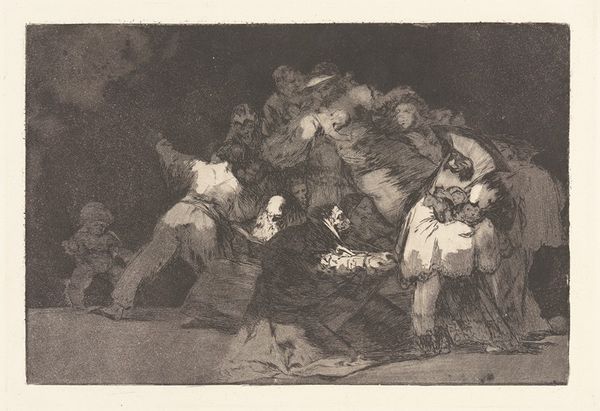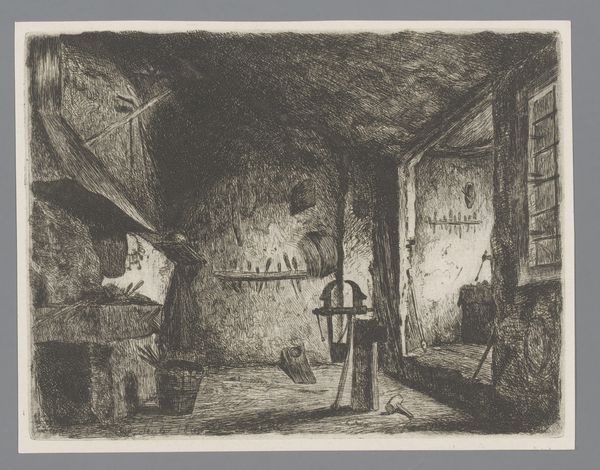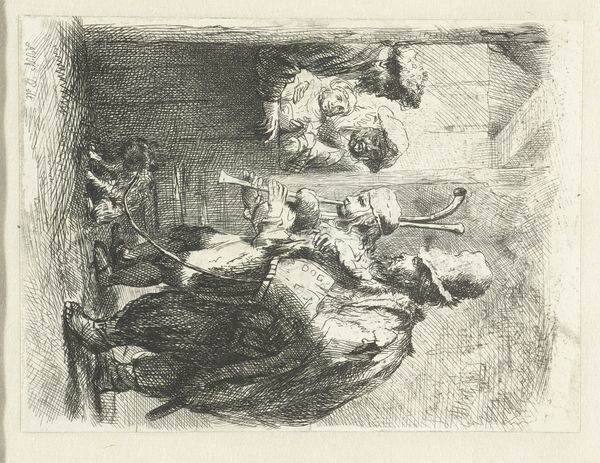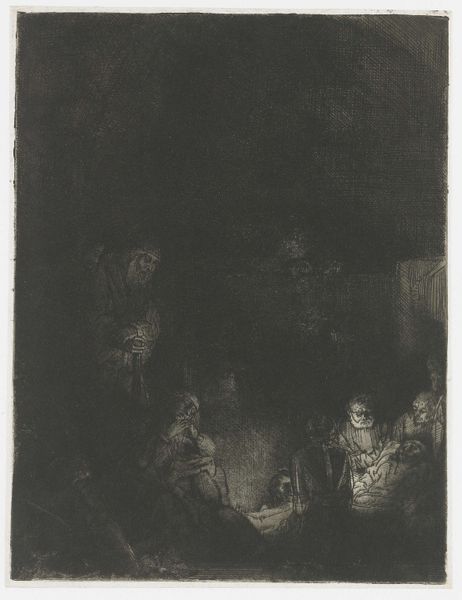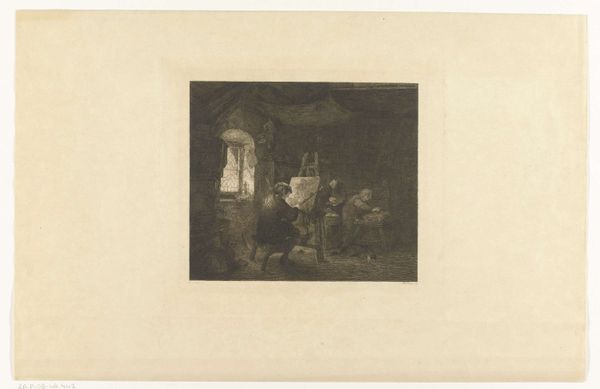
print, etching
# print
#
etching
#
landscape
#
charcoal drawing
#
figuration
#
romanticism
#
orientalism
#
genre-painting
Copyright: Public domain
Mariano Fortuny Marsal made this etching, “Shoeing a mule in Morocco,” at an unknown date. Its themes resonate with the Orientalist art that was in vogue in Europe during the 19th century. This image creates meaning through visual codes that reflect European views of North Africa. In this etching, Fortuny depicts a scene of everyday life, but it also evokes a sense of exoticism and otherness. It is also worth noting the political and economic interests that European countries, including Spain, had in Morocco at the time. These interests shaped the way that Moroccan culture was represented in art. Images can be seen as self-consciously progressive in their desire to represent other cultures, but may be limited by their own preconceptions. To better understand this work, we can examine how Spain's historical relationship with Morocco shaped its cultural representation. Studying colonial archives, travel literature, and ethnographic studies from the period can reveal the complex dynamics of cultural exchange and representation that inform this etching. Ultimately, the meaning of art is contingent on the social and institutional context in which it is created and viewed.
Comments
No comments
Be the first to comment and join the conversation on the ultimate creative platform.
